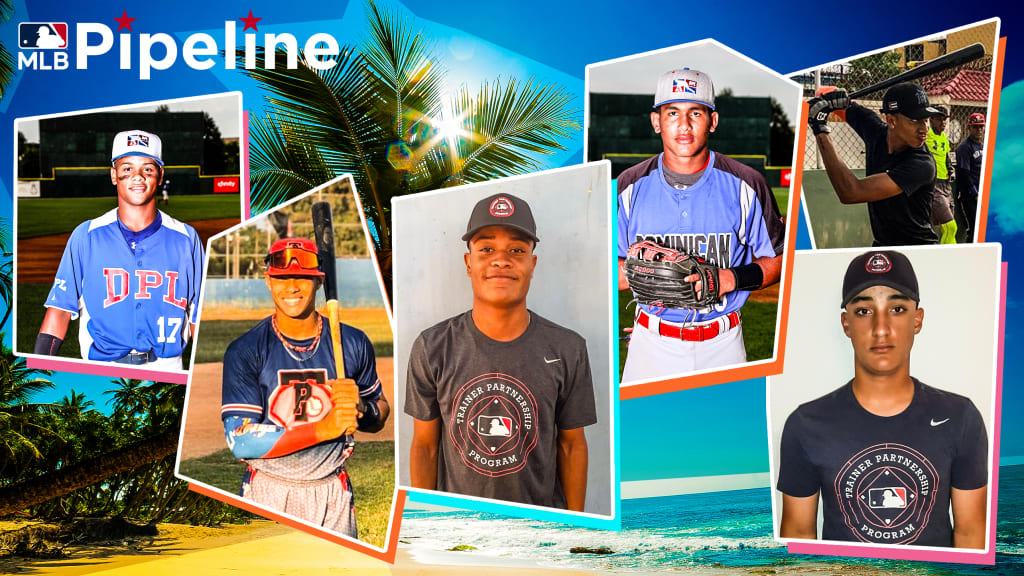
The start of the international signing period that usually starts on July 2 has shifted to January, but this month remains one of the most important periods on the baseball calendar.
The Dominican Summer League, the first foray into professional baseball for most young international prospects, is scheduled to resume play for the first time since the summer of 2019 on July 12 in Boca Chica, Dominican Republic.
“We are excited for the return of the DSL on July 12, and to welcome hundreds of new international players into the professional game,” said Morgan Sword, MLB's executive vice president, baseball operations. “Due to the pandemic, these players have waited a long time for this opportunity. We wish them the best as they begin their journeys to the big leagues.”
Prior to the pandemic, the 72-game Dominican Summer league would start in June and end in late August. This year’s version of the DSL, which will feature more than 45 teams across six divisions, runs through early October. There will not be a DSL postseason this year.
The DSL rosters will be made up of prospects signed during the 2019-2020 international signing period that started July 2, 2019, and ended Oct. 15, 2020, as well as prospects from the current 2020-2021 period that started January 15, 2021. Some members of the 2019-2020 class played in the DSL in the summer of 2019, but there were others who waited on a 2020 DSL season that never materialized.
Among the international prospects to watch in the DSL from the 2019-2020 class are outfielders Bayron Lora (Rangers No. 18), and Jhon Diaz (Rays No. 26), shortstops Yiddi Cappe (Marlins No. 19) and Junior Sanchez (Marlins) along with right-handed pitcher Kristian Cardozo (Mariners).
Noteworthy participants from the 2020-2021 class include shortstops Wilman Diaz (Dodgers No. 9), Carlos Colmenarez (Rays No. 15), Armando Cruz (Nationals No. 7), Cristian Hernandez (Cubs No. 4), Daniel Vazquez (Royals No. 17), Cristian Santana (Tigers No. 12), Danny De Andrade (Twins No. 25), Jackson Chourio (Brewers No. 15), Diego Velasquez (Giants), Angel Genoa (Indians), Manuel Beltre (Blue Jays No. 19), Fran Alduey (Indians), Abel Bastidas (Tigers), Fredy Michel (Twins), Denzer Guzman (Angels No. 17) and Maikol Hernandez (Orioles No. 18).
Other prospects from the class of 2020-2021 include catchers Jesus Galiz (Dodgers No. 22) and Rickardo Perez (Phillies No. 19), outfielders Shalin Polanco (Pirates), Pedro Pineda (A’s No. 13) Jhonny Piron (Rays), Miguel Bleis (Red Sox), Ariel Almonte (Reds No. 23) and right-handed pitcher Norge Vera (White Sox No. 7).
Give these resilient prospects credit. They stayed active by working out on their own at home when their team academies were shut down. They kept in touch with their team’s area scouts through phone calls, FaceTime, and WhatsApp messaging while doing everything they could to navigate the global pandemic and all of the uncertainties it delivered.
The hard work has paid off. The next phase of their careers begins in 10 days.
“It’s a big deal to have the DSL back,” said Orioles international scouting director Koby Perez. “It feels like it’s been 10 years since they played a game, so everybody is super excited about it. It’s kind of getting back to normal, which is a good thing.”
Similar to previous years, the players in this year’s DSL will generally range in age from 17-22, and they will live at their respective team’s academy. Their days will start early, sometimes as early as 5:30 a.m., and will include weight training along with early batting and fielding practice. Games usually starts around 10:30 a.m. There’s a postgame lunch, English and life skills classes, and then a little free time after dinner.
“It’s an important league for the development of the international player on and off the field, so it means everything,” said Joe Salermo, international scouting director for the Giants. “This is their first step in organized baseball, their first step in establishing a routine, and their first taste of independence. It also gives organizations a chance to introduce all of their processes and their own plans.”
From a performance standpoint, the best prospects in the DSL will eventually graduate to the Arizona and Florida Complex League then move on Spring Training, Extended Spring Training, and lower-level Minor League teams.
“For 90 percent of the kids, this is where they start -- and it’s not just kids from the Dominican, because they are also from the other countries like Venezuela, Colombia, Curacao, Panama and Nicaragua,” said Marco Paddy, who is in charge of international scouting as the special assistant to White Sox general manager Rick Hahn. “To be able to bring those kids in and have them participate in games and a schedule is huge, not only for the players, but for the Dominican Republic from an economic standpoint. It’s also huge for the organizations, because there is a lot of money that’s spent on building those complexes and having an infrastructure there.”
There’s no denying the DSL’s importance to the industry. Some players in the DSL are valuable enough to be considered secondary pieces in Major League trades now. The overall value of some of these prospects will only increase as they develop and make their way through the Minor Leagues.
But first things first: It’s time to play ball.
“You can’t start college without a grammar school education, and that’s what the DSL is,” said Johnny Dipuglia, Nationals assistant general manager in charge of international operations “This league is grassroots baseball for young and inexperienced players. They need this.”
